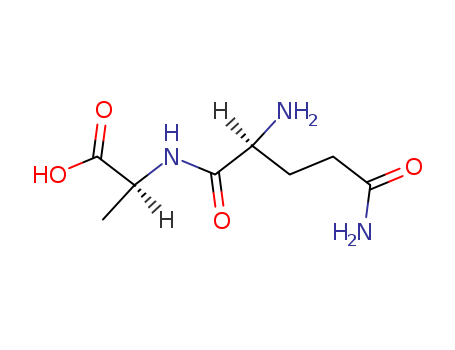- Chemical Name:Glutaminylalanine
- CAS No.:16874-70-7
- Molecular Formula:C8H15N3O4
- Molecular Weight:217.225
- Hs Code.:2924199090
- DSSTox Substance ID:DTXSID201314377
- Nikkaji Number:J488.861H
- Wikidata:Q76411576
- Metabolomics Workbench ID:78756
- ChEMBL ID:CHEMBL1221528
- Mol file:16874-70-7.mol
Synonyms:H-Gln-Ala-OH;glutaminylalanine;16874-70-7;Gln-Ala;L-GLUTAMINYL-L-ALANINE;Alanylglutamine;99%;(2S)-2-[[(2S)-2,5-diamino-5-oxopentanoyl]amino]propanoic acid;(S)-2-((S)-2,5-Diamino-5-oxopentanamido)Propanoic acid;QA dipeptide;glutaminyl-alanine;Q-A Dipeptide;L-Gln-L-Ala;L-Gln-L-Ala-OH;Glutamine Alanine dipeptide;Glutamine-Alanine dipeptide;SCHEMBL751144;CHEMBL1221528;CHEBI:157823;FAQVCWVVIYYWRR-WHFBIAKZSA-N;DTXSID201314377




